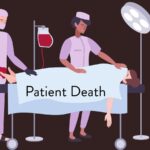
Trauma encompasses events or experiences that overwhelm an individual’s ability to cope, often involving perceived or actual threats to life, integrity, or safety (American Psychiatric Association, 2022). While trauma was once primarily associated with combat or catastrophic events, it is now recognised as a transdiagnostic risk factor that manifests in various ways, ranging from PTSD to chronic physical conditions.
The impact of trauma varies throughout an individual’s life. Early childhood exposure to trauma can lead to developmental disruptions (Ford et al., 2022), whereas trauma experienced in older adulthood may present atypical or under-recognised symptoms (Fox et al., 2020). Gender also plays a significant role in trauma exposure and outcomes: women are more likely to experience interpersonal violence and to develop PTSD (Tolin & Foa, 2008), while sexual and gender minorities face disproportionate risks (Blackburn et al., 2024).
Importantly, trauma occurs in both local and global contexts. From war zones to climate-related disasters, the nature and meaning of trauma can vary across cultures (Hecker et al., 2017).

Effectively addressing trauma requires not only individualized treatment but also culturally informed, system-level responses that consider structural inequities and global challenges.
Methods
Olff et al. (2025) conducted a narrative review to synthesise 15 years of research on trauma exposure, outcomes, and interventions. The review included psychological, pharmacological, and complementary treatments, with a transdiagnostic lens.
The methodology drew from peer-reviewed articles, meta-analyses, and global collaborations, integrating clinical, epidemiological, and neurobiological findings. All authors simultaneously serve as editors of the European Journal of Psychotraumatology, as stated in the article’s conflict-of-interest statement. The paper lacks a clear database search protocol, keyword strategy, and explicit criteria for inclusion or exclusion. While it provides broad thematic insights, it cannot be replicated or formally assessed for quality in the same manner as a registered systematic review.
Results
Mental and physical health consequences
Trauma is a significant risk factor for a wide range of mental and physical disorders. In addition to PTSD, survivors often experience depression, anxiety, sleep disturbances, and substance use disorders (Milanak et al., 2019; Roberts et al., 2022). There are also physical health risks, including cardiovascular disease, autoimmune disorders, and metabolic syndromes, often caused by dysregulation of the stress response system and maladaptive coping strategies (Michopoulos et al., 2016; Taylor et al., 2020). Moreover, PTSD has been linked to accelerated biological aging (Wolf & Morrison, 2017).
Resilience
Resilience is the most common response to exposure to trauma; studies show that two-thirds of survivors experience minimal long-term psychological effects (Galatzer-Levy et al., 2018). Key factors contributing to resilience include emotional flexibility, self-efficacy, optimism, and the ability to find meaning in experiences (Bonanno, 2021). However, resilience may come with physiological costs, such as increased allostatic load, especially in situations of chronic adversity (Brody et al., 2016).
Trauma-related diagnoses
While PTSD is well-recognised, newer diagnostic constructs have emerged. The ICD-11 distinguishes between PTSD and Complex PTSD (CPTSD), which includes disturbances in self-concept and interpersonal relationships. Dissociative PTSD (D-PTSD) is also an important subtype (Hansen et al., 2017). The inclusion of Prolonged Grief Disorder (PGD) in the DSM-5-TR and ICD-11 acknowledges pathological grief as a distinct condition, especially in the context of COVID-19-related losses (Eisma & Lenferink, 2023; Djelantik et al., 2021).
Moral injury is another increasingly recognised area, particularly in healthcare and refugee populations. It refers to the psychological harm resulting from violations of moral beliefs and is often overlooked in clinical practice (Maguen & Norman, 2024).
Other comorbid mental health conditions
PTSD frequently co-occurs with major depression, anxiety, and substance use disorders. For instance, 52% of individuals with PTSD also meet the criteria for comorbid depression (Rytwinski et al., 2013). PTSD can also co-occur with borderline personality disorder (BPD), particularly among those with complex trauma histories, leading to questions about diagnostic overlap and treatment effectiveness (Snoek et al., 2021). Sleep disturbances (e.g., such as insomnia and nightmares) are common in those with PTSD and may hinder treatment outcomes (Colvonen et al., 2019).
Transdiagnostic perspectives and survivor-centered approaches
Given the high rates of comorbidity and diagnostic overlap, trauma research is shifting towards transdiagnostic models. These frameworks recognise shared vulnerabilities, such as emotional dysregulation, avoidance, and hyperarousal, across multiple disorders (Grace et al., 2023). Transdiagnostic approaches improve access to care by allowing for broader treatment targets, which is particularly beneficial in low-resource settings (Makhashvili et al., 2022).
Neurobiological and genetic advances
Neuroimaging studies have identified PTSD-related alterations in the amygdala, prefrontal cortex, and hippocampus, regions critical for fear regulation and memory (Logue et al., 2018). Genetic studies indicate that PTSD is moderately heritable, with overlapping genetic risks associated with depression and other disorders (Nievergelt et al., 2024).
Lifespan and gender considerations
The impact of trauma varies across age and gender. Children exposed to trauma demonstrate dose–response patterns of impairment, especially when facing multiple forms of adversity (Ford et al., 2021). Women tend to experience higher rates of PTSD and comorbidity, often due to hormonal and social factors (Glover et al., 2013; Olff et al., 2007). Older adults may underreport PTSD symptoms because of stigma or cognitive decline, and current diagnostic tools often fail to effectively capture their symptomatology (Fox et al., 2020).

Trauma is a major risk factor for diverse mental and physical health conditions; evolving diagnostic frameworks, neurobiological insights, and transdiagnostic approaches are improving understanding and treatment across the lifespan.
Conclusions
Olff et al. (2025) present a coherent, timely review that reframes trauma as a global, lifespan, and transdiagnostic concern.
In authors’ words, “A biopsychosocial, transdiagnostic, lifespan, and global approach is essential” to address trauma comprehensively.
Advances in neuroscience, genetics, and culturally informed care are reshaping the field, and practice need to keep pace.

Trauma is not merely an individual psychological wound, but a phenomenon shaped by biology, relationships, and social structures.
Strengths and limitations
The key strength of the narrative review lies in its thematic depth and integration across various disciplines. By considering lifespan, gender, and cultural contexts, it demonstrates a contemporary, equity-informed approach to psychotraumatology. The review engages with current evidence from diverse methodologies; from neuroimaging to global public health, positioning it as a leading summary of trauma research.
However, the study does not adhere to systematic review protocols, raising concerns about selection bias. There is no explanation of how the articles were selected or assessed for quality, which limits transparency and replicability. Additionally, the review is authored by the editors of the journal in which it is published, which may introduce confirmation bias. The extensive author list, while multidisciplinary, also raises questions about potential conflicts of interest and the balance of perspectives included.
Observer bias is another issue. As a narrative review, the thematic organisation is influenced by subjective choices regarding what to highlight or omit.
While the review is broad in scope, it may lack depth in evaluating the efficacy of specific interventions or distinguishing which populations benefit most from them. A more detailed analysis of study quality, heterogeneity, and effect sizes would enhance its practical application in clinical settings.
While it raises valid concerns about conflict of interest – since every author is also an editor for the EJPT and may favourably cite their own work or overlook dissenting findings, the article is still valuable. Few others possess the perspective or institutional memory necessary to track the evolution of psychotrauma science across epidemiology, neurobiology, and treatment since 2009. To reduce potential bias in future anniversary reviews, the journal could take several steps: preregister a search protocol, assign database screening to an independent methods team, and publish a complete list of included and excluded studies. These measures would help maintain the editorial board’s comprehensive insight while ensuring the transparency and replicability that today’s readers expect.

Without clear inclusion and exclusion criteria, readers cannot determine if contradictory findings were overlooked.
Implications for practice
The review advocates for a shift toward integrated, survivor-centered care. Trauma should no longer be viewed as a purely psychiatric issue but recognised as a public health challenge that encompasses social, biological, and political aspects.
From a policy perspective, investing in early intervention is essential. Evidence supports the effectiveness of trauma-focused cognitive-behavioural therapy (CBT) for individuals experiencing symptoms after trauma (Bisson et al., 2022), yet access to these services remains inconsistent. Low- and middle-income countries particularly need support to expand effective interventions through task-sharing models (Singla et al., 2020). Policymakers should also explore funding for culturally adapted tools, such as the Global Psychotrauma Screen (Frewen et al., 2021).
Future research should focus on comparative effectiveness studies of interventions across various settings and populations, as well as the development of digital and AI-supported tools. Importantly, as Olff (2024) suggests, the use of AI in trauma care must be ethically grounded and centered around user needs.
Clinically, the review urges routine trauma screening and emphasises a phased approach. Once PTSD is established, clinicians should offer a guideline-endorsed trauma-focused therapy, with cognitive-behavioural methods as first-line and EMDR as an alternative for patients who prefer a less verbal, imagery-based approach. Whatever the modality, it’s essential to ground therapy in a relationship built on safety, trust, and shared control, factors that the authors indicate are just as important for recovery as the techniques themselves.
In terms of research, authors advocate for involving survivors, particularly those from marginalised communities, in the design of studies and for testing interventions in regular clinical settings to ensure that the findings are relevant to real-world practice.
Ultimately, these results urge us to contemplate systemic change. Trauma-informed practices in schools, workplaces, and justice systems are not optional; they are vital to breaking cycles of harm. As trauma emerges as a defining issue of our time, it is crucial for our practices to reflect the complex realities of trauma and acknowledge the full humanity of those it impacts.

Clinicians must be trained in trauma-informed approaches that consider gendered experiences, cultural diversity, and developmental stages.
Statement of interests
No conflicting interests to declare. I acknowledge the use of AI in assisting with the revision of the text to enhance clarity and correctness. This tool has helped improve the overall quality of the written content.
Links
Primary paper
Olff, M., Hein, I., Amstadter, A. B., Armour, C., Skogbrott Birkeland, M., Bui, E., Cloitre, M., Ehlers, A., Ford, J. D., Greene, T., Hansen, M., Harnett, N. G., Kaminer, D., Lewis, C., Minelli, A., Niles, B., Nugent, N. R., Roberts, N., Price, M., Reffi, A. N., Seedat, S., Seligowski, A. V., & Vujanovic, A. A. (2025). The impact of trauma and how to intervene: A narrative review of psychotraumatology over the past 15 years. European Journal of Psychotraumatology, 16(1), 2458406.
Other references
American Psychiatric Association. (2022). Diagnostic and statistical manual of mental disorders (5th ed., text rev.).
Bisson, J. I., Cosgrove, S., Lewis, C., & Roberts, N. P. (2022). Post-traumatic stress disorder. BMJ, 376, e069445.
Blackburn, A. M., Martinez, C., & Hanson, R. F. (2024). Risk and resilience among sexual and gender minorities exposed to trauma. Journal of Traumatic Stress, 37(1), 15–28.
Bonanno, G. A. (2021). The end of trauma: How the new science of resilience is changing how we think about PTSD. Basic Books.
Brody, G. H., Yu, T., Chen, E., Beach, S. R. H., & Miller, G. E. (2016). Family-centered prevention ameliorates the effects of poverty on biological aging. Proceedings of the National Academy of Sciences, 113(38), E5122–E5129.
Colvonen, P. J., Straus, L. D., Stepnowsky, C. J., McCarthy, M. J., Goldstein, L. A., & Norman, S. B. (2019). Recent advancements in treating sleep disorders in co-occurring PTSD. Current Psychiatry Reports, 21(9), 75.
Djelantik, A. A. A. M. J., Smid, G. E., Kleber, R. J., & Boelen, P. A. (2021). Prolonged grief in the context of COVID-19. Journal of Affective Disorders, 282, 122–129.
Eisma, M. C., & Lenferink, L. I. M. (2023). Grief before and during the COVID-19 pandemic. Clinical Psychology Review, 103, 102322.
Ford, J. D., Grasso, D. J., & Elhai, J. D. (2022). Developmental trauma disorder: A legacy of attachment disruption and adverse childhood experiences. Journal of Traumatic Stress, 35(4), 933–947
Fox, L., Duffy, C. J., Jones, J. D., & O’Connor, M. (2020). PTSD in older adults: Diagnosis, prevalence, and management. International Psychogeriatrics, 32(5), 511–522.
Frewen, P., et al. (2021). Validation of the Global Psychotrauma Screen in multiple languages. European Journal of Psychotraumatology, 12(1), 1895637.
Glover, E. M., Mercer, K. B., Norrholm, S. D., Davis, M., Duncan, E., & Bradley, B. (2013). Inhibition of fear is impaired by low estradiol in women. Psychological Medicine, 43(3), 529–542.
Grace, L., Hyland, P., & Karatzias, T. (2023). Transdiagnostic approaches to trauma-related psychopathology. Current Opinion in Psychology, 48, 101592.
Hansen, M., Ross, J., Armour, C., Elklit, A., & Shevlin, M. (2017). Assessing the latent structure of dissociative PTSD. Journal of Anxiety Disorders, 48, 145–152.
Hecker, T., Fetz, S., Ainamani, H., & Elbert, T. (2017). The cycle of violence: From trauma to ongoing aggression. Child Abuse & Neglect, 69, 222–231.
Logue, M. W., van Rooij, S. J. H., Dennis, E. L., Davis, S. L., Hayes, J. P., Stevens, J. S., … & Morey, R. A. (2018). Smaller hippocampal volume in PTSD. Biological Psychiatry, 83(3), 244–253.
Maguen, S., & Norman, S. B. (2024). Moral injury in health care and public health. Psychological Trauma: Theory, Research, Practice, and Policy, 16(1), 1–8.
Makhashvili, N., Chikovani, I., Drožđek, B., & Javakhishvili, J. D. (2022). Transdiagnostic interventions for trauma in low-resource settings. Global Mental Health, 9, e20.
Michopoulos, V., Powers, A., Gillespie, C. F., Ressler, K. J., & Jovanovic, T. (2016). Inflammation in fear- and anxiety-based disorders. Brain, Behavior, and Immunity, 52, 131–147.
Milanak, M. E., Gros, D. F., Magruder, K. M., Brawman-Mintzer, O., & Frueh, B. C. (2019). PTSD and sleep: A review. Journal of Anxiety Disorders, 69, 102120.
Nievergelt, C. M., Maihofer, A. X., & Logue, M. W. (2024). PTSD genomics: Multi-ancestry meta-analyses. Nature Genetics, 56(1), 37–47.
Olff, M. (2024). Artificial intelligence in trauma research and care: Promise and perils. European Journal of Psychotraumatology, 15(1), 2298874.
Olff, M., Hein, I., Amstadter, A. B., et al. (2007). Gender differences in PTSD. European Journal of Psychotraumatology, 16(1), 2458406.
Roberts, N. P., Roberts, P. A., Jones, N., & Bisson, J. I. (2022). PTSD and substance use comorbidity: Treatment and outcomes. Addiction, 117(4), 1024–1036.
Rytwinski, N. K., Scur, M. D., Feeny, N. C., & Youngstrom, E. A. (2013). The co-occurrence of major depressive disorder among individuals with PTSD. Journal of Traumatic Stress, 26(3), 299–309.
Singla, D. R., Kohrt, B. A., Murray, L. K., Anand, A., Chorpita, B. F., & Patel, V. (2020). Psychological treatments for the world: Lessons from task-sharing in LMICs. Annual Review of Clinical Psychology, 16, 149–174.
Snoek, A., van der Aa, N., et al. (2021). The impact of comorbid personality disorders on PTSD treatment. Journal of Anxiety Disorders, 82, 102418.
Taylor, D. J., Pruiksma, K. E., Hale, W., McLean, C. P., Zandberg, L. J., Brown, L., … & Foa, E. B. (2020). Sleep problems in active duty military personnel seeking treatment for posttraumatic stress disorder: presence, change, and impact on outcomes. Sleep, 43(10), zsaa065.
Tolin, D. F., & Foa, E. B. (2008). Sex differences in trauma and PTSD. Psychological Bulletin, 132(6), 959–992.
Wolf, E. J., & Morrison, F. G. (2017). Accelerated aging and PTSD. Psychiatric Annals, 47(6), 328–332.









